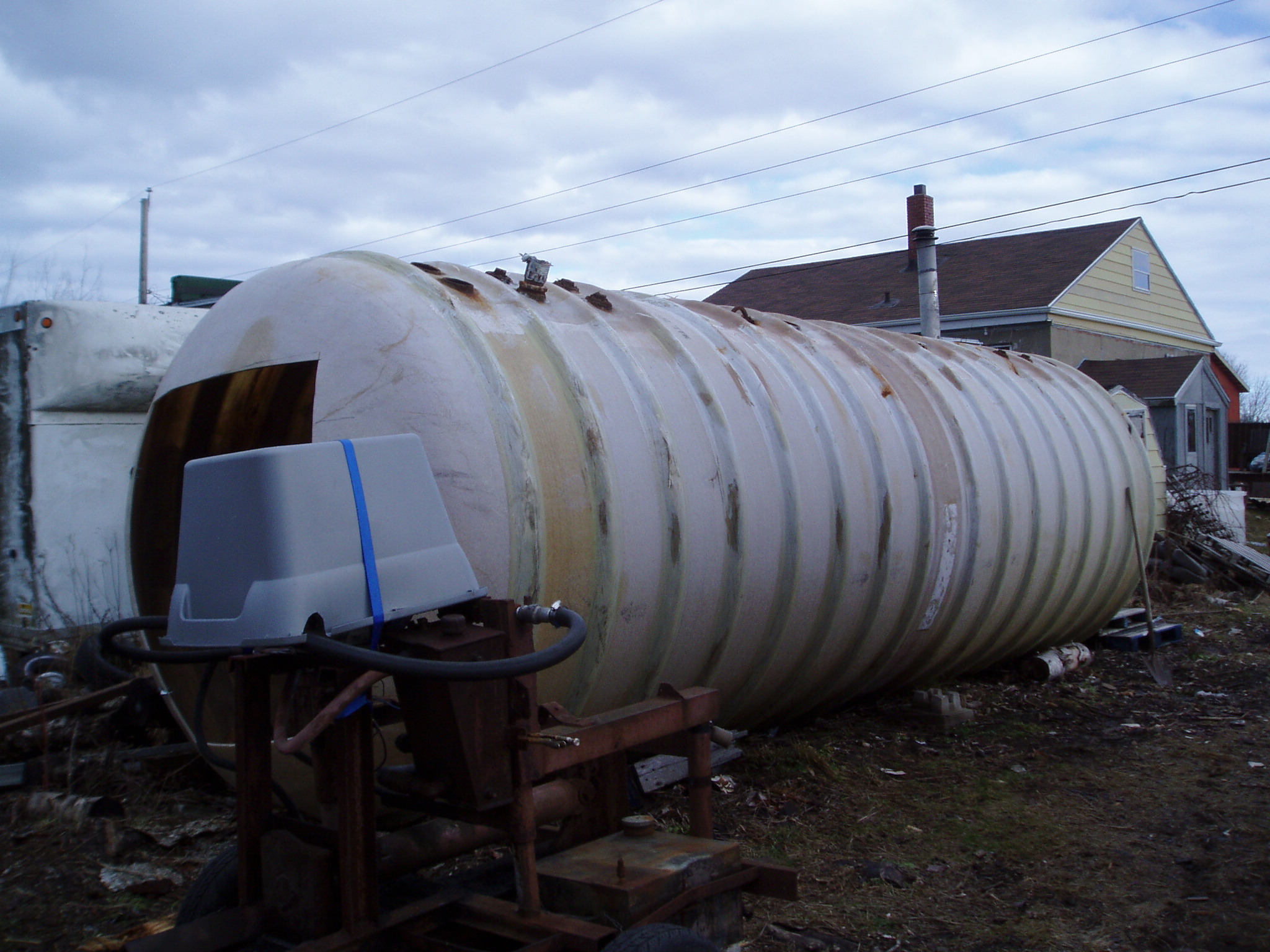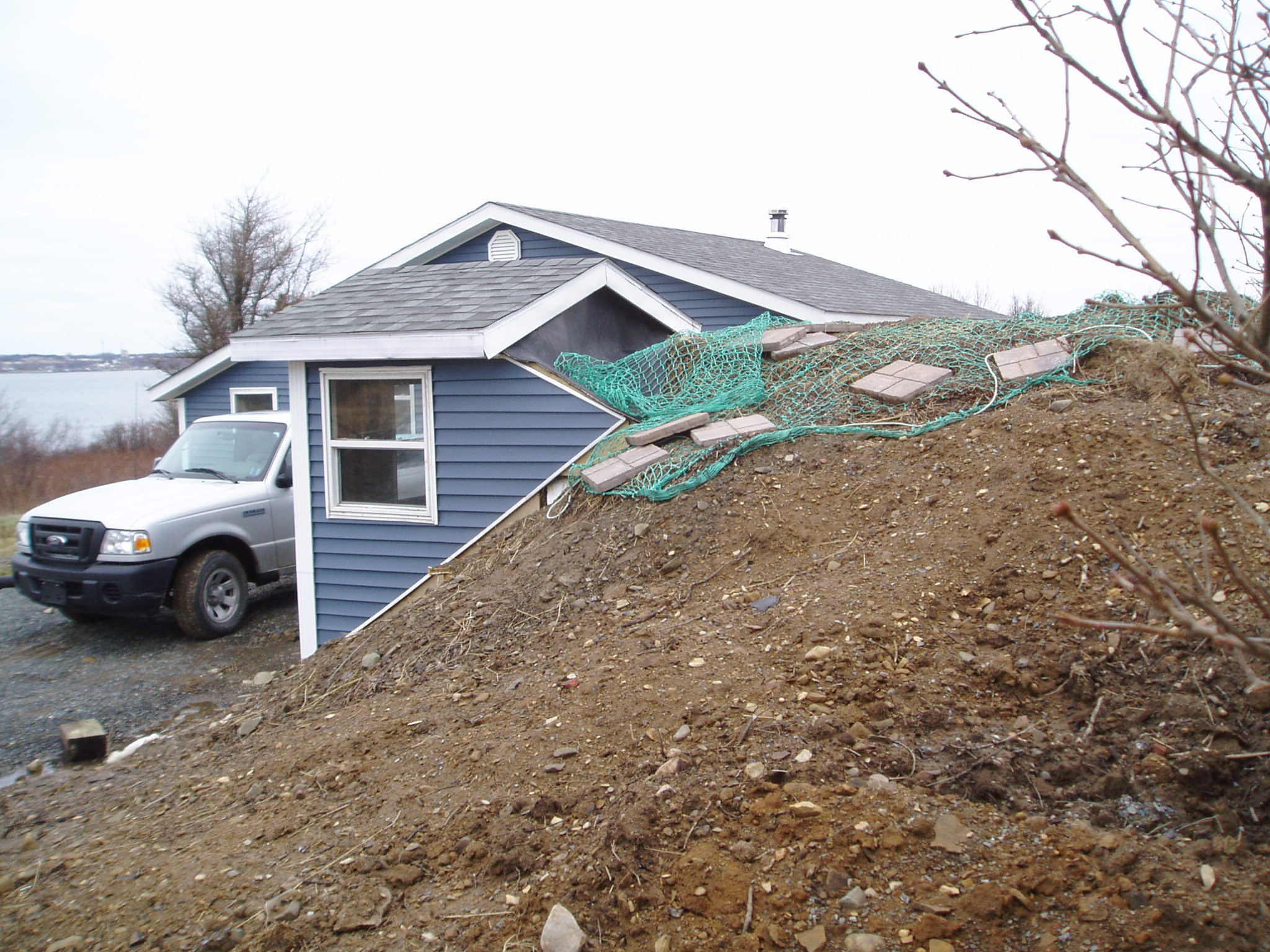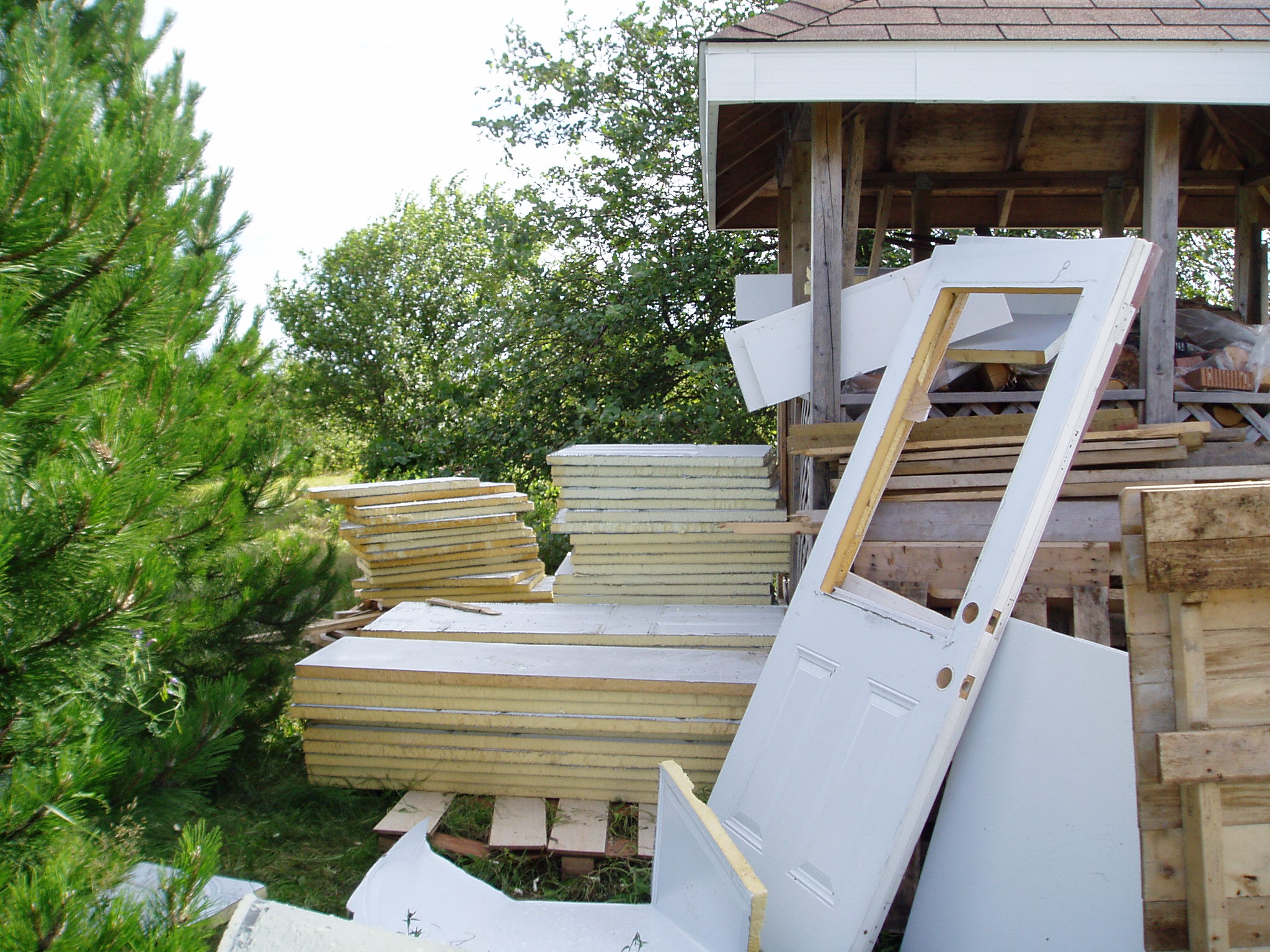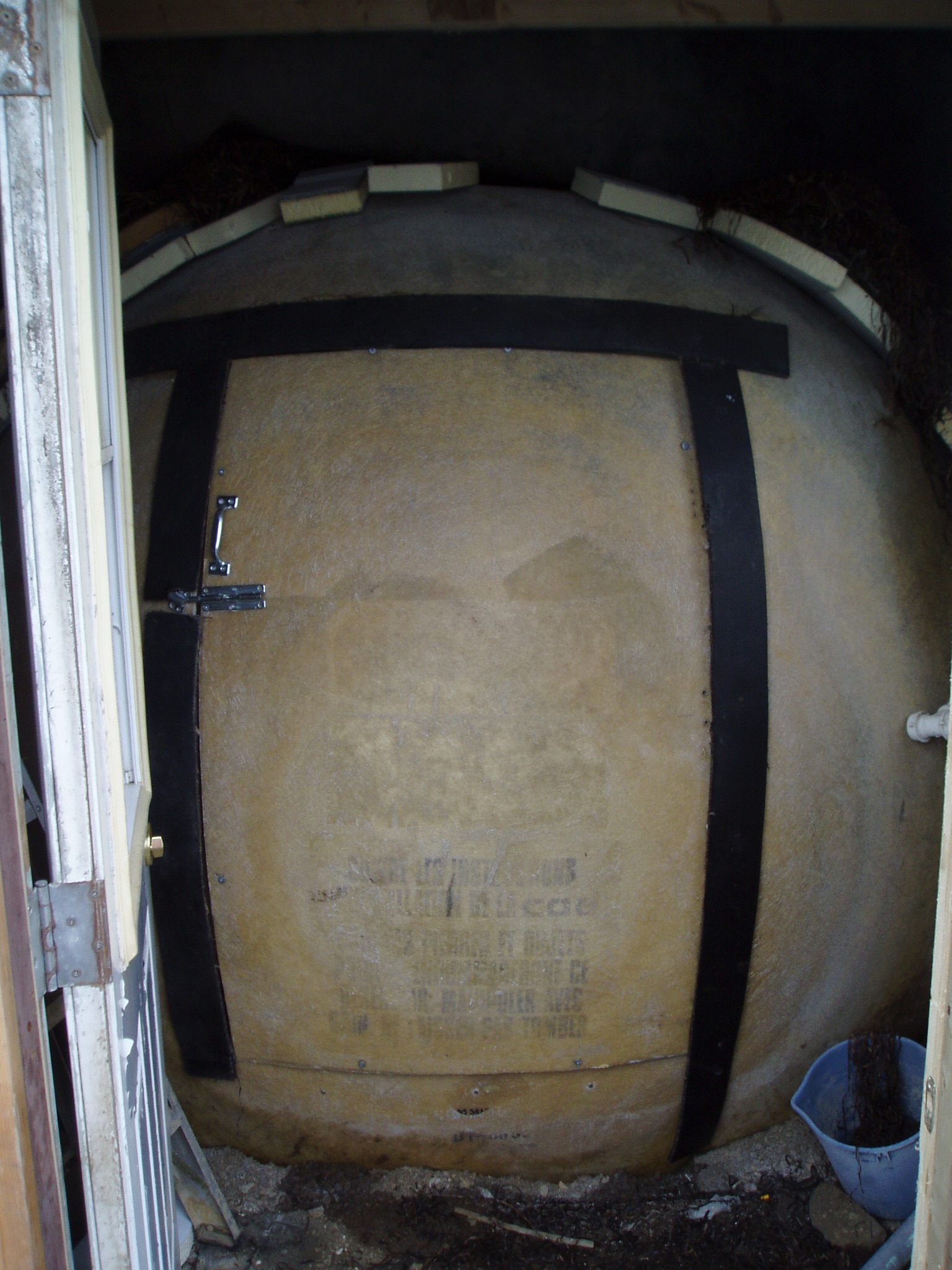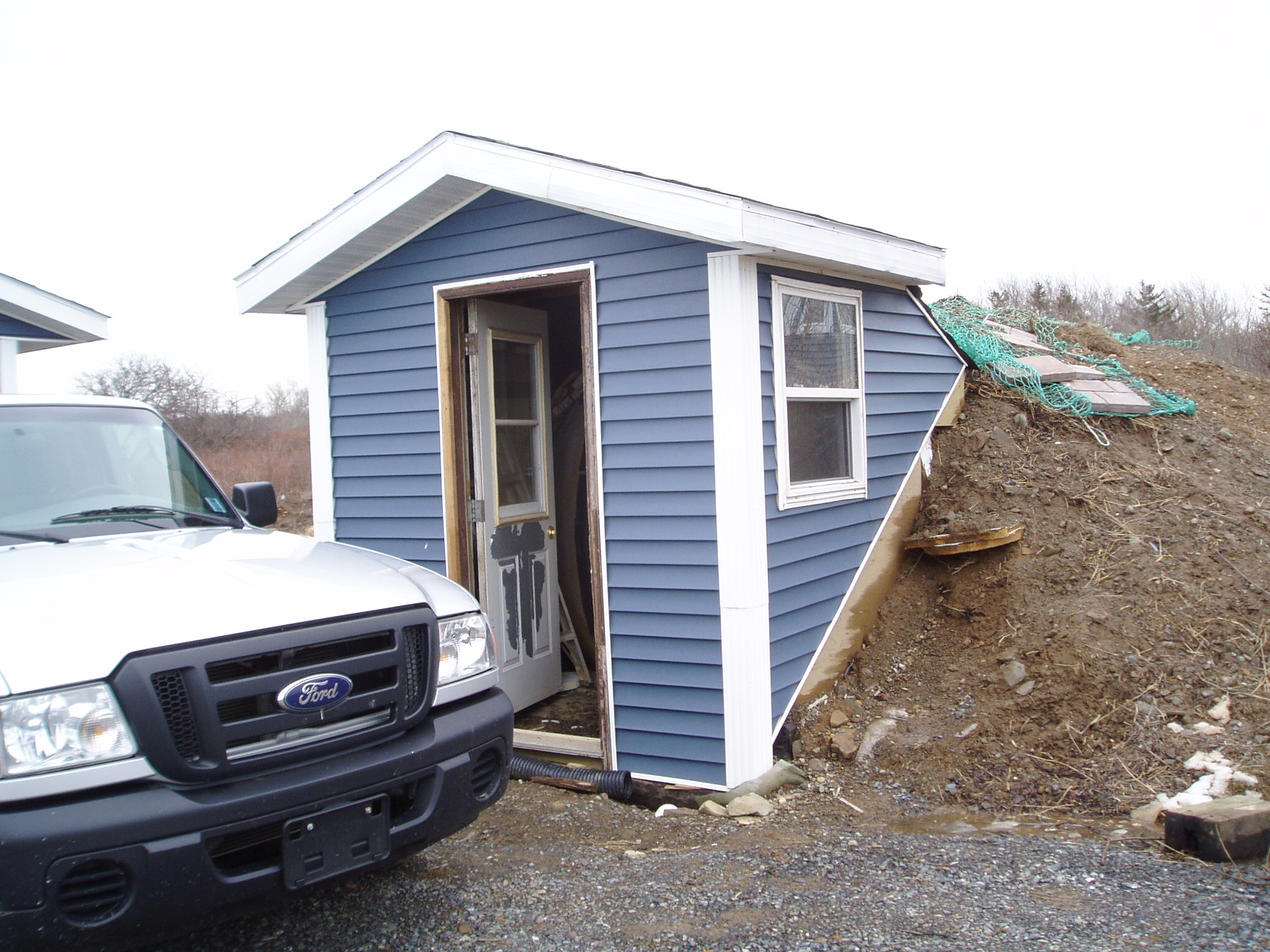Is it a garage? Is it a hill for sliding? Is it a passageway to The Secret World of Og? No, silly! What you see here is a root cellar, complete with a front entryway! Tucked underneath the cover of ground, Leonard Vassallo has converted an oil tank into a cellar that’s providing him with space to store produce from his garden, year round. We think it’s pretty amazing. Maybe you will too!

Leonard Vassallo’s Root Cellar, From Above
Leonard Vassallo is an old friend to many who are involved with sustainability initiatives in Newfoundland and Labrador. Formerly based in Corner Brook, Vassallo is the recipient of a Lifetime Achievement Award from the Multi Materials Stewardship Board, as well as the Corner Brook Sustainability Award for Green Living. In his work he has contributed to the establishment of environmental projects and policies at the College of the North Atlantic, and in the communities of Corner Brook and Stephenville. Leonard has supported those who are seeking to lead more sustainable lives. He has acted as an example to others through his day-to-day decisions and lifestyle habits, is an avid gardener, and is keen to share these skills with others. After living in Newfoundland and Labrador for thirty-four years, he and his wife relocated to Cape Breton Island in 2010. Here at Root Cellars Rock, we agree that Leonard is a most inspiring being. It may come as no surprise to learn that he has recently converted a former oil tank into a root cellar.
Say what? Yes, that’s right. Oil tank root cellar. It is possible to make one. No guff. Leonard spoke with me from his home in Cape Breton last week in order to share a few how-to construction tips.
The Idea
The idea to turn a de-commissioned oil tank into a root cellar had been on Len Vassallo’s mind for a while. During a trip to New Zealand ten years ago, he saw a sauna that had been made out of an oil tank and kept the idea to re-use one of these containers in his back pocket for another day.
After his retirement, he decided to look into the idea a little more.
First, Leonard had to find an oil tank!
As it turns out, it wasn’t so difficult. Leonard went to a junk yard located close to his home, and found the tank that is pictured above. If you are interested in using something similar for your own root cellar, be sure to check out your local landfill as there is a good chance that you will find one there. The MMSB website also offers information about where these tanks may be disposed of in Newfoundland and Labrador: http://www.mmsb.nl.ca/3rguide-search.asp?id=63
Leonard’s root cellar is made from a medium-sized fibreglass tank, which cost $300 (including delivery).Oil tanks like Leonard’s come in a variety of sizes. Some are smaller, and some are larger than this one. Leonard mentioned that they may be sourced in order to suit particular storage needs. For instance, a family may wish to find a smaller tank, while a community organization may seek out a medium or large-sized tank for their storage needs. Leonard also suggested that these tanks be examined for potential use on farms. He pondered the possibility of utilizing them to store larger amounts of food, or even as protective cover for animals.
In Newfoundland and Labrador, oil tanks have been re-used in order to act as shelter from cold weather, providing space to have a cup of tea after cutting wood in fall. Metal oil tanks have also been used as large garbage bins where bags of household waste may be protected from birds, and they even make great sheds! There are a number of possibilities for de-commissioned oil tanks to be used again; however, one must be certain that the tank has been properly cleaned.
In Newfoundland and Labrador, industrial oil tanks are typically cleaned by Crosbie Industrial, a waste management company that can remove any remaining oil liquid, sludge, and vapour. When they require replacement, households will arrange to have their tanks disposed of by oil companies. It is most likely the case that households do not have the capacity to clean the tanks thoroughly enough for them to be re-used at home. If you decide to seek out an oil tank for your own root cellar, make sure that it has been disposed of properly, and that the container does not have any lingering oily smells. You should also check to make sure that any water within the tank does not have a sheen, which may indicate oil contamination.
Leonard was aware that oil companies in Nova Scotia are responsible for cleaning and disposing of the tanks. When he found one in the junk yard, he noticed that it did not smell of oil, and decided to purchase it and have it deposited in his yard. It just so happens that the tank was delivered while he was finishing construction on his garage and driveway. Leonard had it buried in a hill beside his house while these other activities were being completed. Like other outdoor root cellars, ground and grass cover help to protect the cellar and keep it cold throughout the year.
Insulation
Oil tanks are not the only materials that Leonard has rescued from local landfills. Steel door cut-outs (the stacks of yellow rectangles that are pictured below) have also been used in Leonard’s flooring projects in his home and the garage. He noted that these are great for insulation, and he used them to act as external reinforcement for his root cellar.
Leonard’s steel door cut-out collection
It would typically cost $70 a tonne to dispose of waste materials that are created in the process of making steel doors. Leonard has established relationships with area manufacturers in order to source these materials when needed. Sydney-area companies are happy to give the cut-outs to Leonard, since it saves them from having to pay to deposit them at a landfill or junk yard.
Doors and Entryways
Leonard constructed a door to the oil tank by cutting out some of the fibreglass on one end, and re-attaching it to hinges. He sealed off the cracks in order to maintain cool internal temperatures.
Finally, he built a small shed around the outside of the tank.
This makes the root cellar a more attractive aspect of his landscape. Leonard re-used a waste door for the shed’s entryway.
What’s In Store
The root cellar was constructed in fall 2011, and Leonard has begun to store potatoes, carrots, turnip, and beets inside. He says he has more than enough room for his garden produce and is considering market gardening in the future. The root cellar will be the perfect place to store greens and vegetables for sales on Cape Breton Island.
-All photos in this post were taken by Leonard Vassallo.



